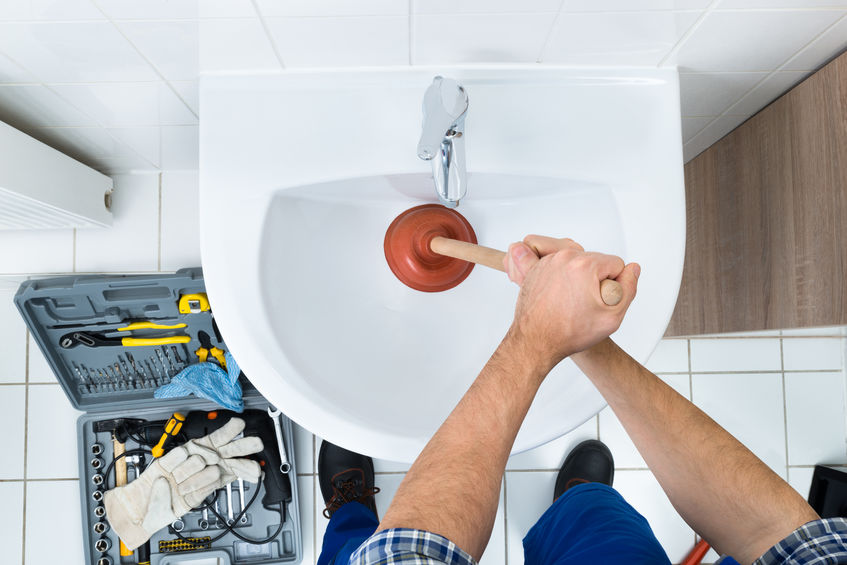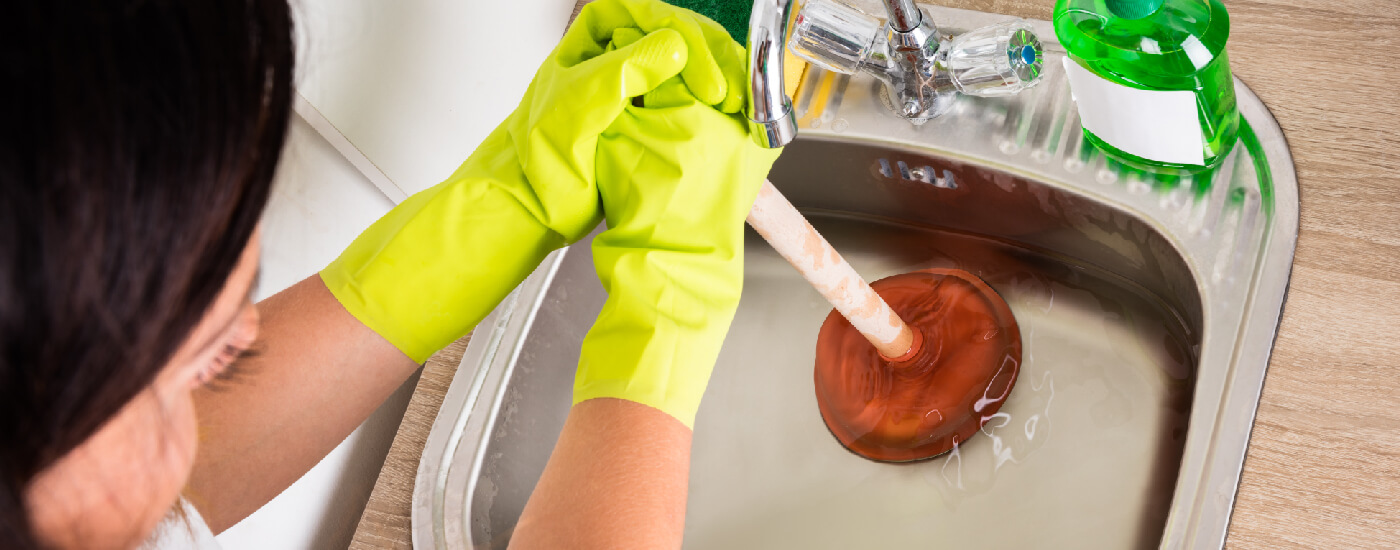Perfecting Plunger and Drain Cleaner: Essential Strategies
Perfecting Plunger and Drain Cleaner: Essential Strategies
Blog Article
Just about every person has got their own individual conception when it comes to Tips on How to Effectively Use a Plunger.

Intro
Correct maintenance of house drains pipes is vital for protecting against obstructions and making certain smooth water circulation. One of the key tools in every property owner's toolkit is the bettor, alongside various drain cleaners made to take on persistent blockages effectively. This article explores just how to make use of plungers and drain cleansers properly to keep your drains pipes moving easily.
Section 1: Recognizing Plungers
Types of Plungers
There are several kinds of bettors available, each made for various sorts of drains pipes and clogs. One of the most common types consist of mug bettors, flange bettors, and accordion plungers.
How Plungers Job
Plungers deal with the principle of developing pressure and suction to remove obstructions. When effectively applied over a drainpipe, they produce a vacuum that can pull out particles or break up obstructions.
Picking the Right Plunger
Picking the right bettor relies on the type of drainpipe and the nature of the obstruction. Cup plungers are ideal for sinks and tubs, while flange plungers are much better matched for toilets because of their style.
Typical Blunders with Bettors
Avoiding these mistakes guarantees efficient plunging: incorrect seal around the drainpipe, not enough pressure, and unclear bordering debris.
Section 2: Making Use Of Plungers Effectively
Prep work
Before plunging, guarantee the bettor covers the drainpipe entirely and develops a limited seal. Clear any noticeable debris around the drainpipe opening.
Strategy
Beginning with gentle diving movements to build suction. Increase stress progressively, utilizing a consistent rhythm. Repeat as necessary till the drain clears.
Fixing Tips
If diving doesn't work, attempt adjusting the seal, using petroleum jelly for a far better seal, or using a various type of plunger.
Area 3: Understanding Drainpipe Cleaning Company
Kinds Of Drainpipe Cleaners
Drain cleaners can be chemical or chemical. Chemical cleansers use strong chemicals to liquify obstructions, while chemical cleaners use natural enzymes to break down organic matter.
Exactly How Drainpipe Cleaners Work
Chemical cleaners react with clogs to dissolve them, while enzymatic cleaners break down organic materials like hair and grease without harming pipes.
Safety Considerations
Constantly put on handwear covers and eye defense when utilizing chemical drain cleaners. Ensure ample air flow and comply with producer instructions meticulously.
Eco-Friendly Alternatives
Consider using vinegar and baking soda or enzyme-based cleansers for eco-friendly alternatives that are safer for pipelines and the atmosphere.
Section 4: Using Drainpipe Cleansers Efficiently
Application Methods
Put chemical cleansers straight into the drainpipe opening. Enable them to benefit the recommended time before flushing with hot water. Enzymatic cleansers ought to rest over night.
Safety measures
Avoid blending different types of cleaners, as this can produce harmful fumes. Never ever make use of chemical cleaners together with a plunger, as splashing can occur.
Managing Persistent Obstructions
For relentless obstructions, take into consideration making use of a pipes serpent or calling a specialist plumber to prevent damages to pipelines.
Final thought
To conclude, understanding how to make use of bettors and drain cleaners properly is crucial for keeping healthy pipes systems. By picking the right devices and strategies, property owners can tackle small obstructions and stop significant pipes concerns down the line.
5 Steps on How to Use a Plunger Effectively
Creating a Seal: Place the rubber cup of the plunger firmly over the toilet drain hole to create an airtight seal. This seal is crucial to prevent air from escaping and ensure effective plunging.
Plunge Gently: Gently press the plunger down to compress the air inside without causing splashing. This careful action sets the stage for effective unclogging without creating a mess.
Maintaining Pressure: Consistently apply pressure to the plunger while pushing and pulling it up and down. This sustained pressure generates the force needed to dislodge the clog.
Breaking the Clog: Continue plunging until you feel the clog release. Look for the water to start draining, indicating successful removal of the blockage.
Flushing and Cleaning: After clearing the clog, flush the toilet to confirm it's working properly. Clean the plunger with warm, soapy water and disinfect it for future use to maintain hygiene.
Additional Tips on How to Correctly Use a Plunger
if you encounter resistance, add some water to the bowl to create better suction;
check the plunger for any rubber cracks to ensure it's in good condition;
exercise patience and persistence, as certain clogs might need multiple attempts.
Mistakes to Avoid when Using Toilet Plunger
avoid using excessive force, as it may damage the toilet;
don't rush the process; take your time to ensure a proper seal and pressure;
never use a plunger if you've recently used chemical drain cleaners
Conclusion
Mastering the art of how to properly use a plunger is a valuable skill for every homeowner. By employing the correct techniques, you can effectively address clogs and ensure your toilet functions smoothly. Patience, persistence, and proactive in maintaining your plunger's hygiene are key to success in this endeavor.
Armed with these skills and principles, you can confidently handle plumbing issues as they arise, promoting a well-functioning and hygienic home environment.
https://homealliance.com/blogs/how-to-effectively-use-a-plunger-the-ultimate-guide

Application Methods
Put chemical cleansers straight into the drainpipe opening. Enable them to benefit the recommended time before flushing with hot water. Enzymatic cleansers ought to rest over night.
Safety measures
Avoid blending different types of cleaners, as this can produce harmful fumes. Never ever make use of chemical cleaners together with a plunger, as splashing can occur.
Managing Persistent Obstructions
For relentless obstructions, take into consideration making use of a pipes serpent or calling a specialist plumber to prevent damages to pipelines.
Final thought
To conclude, understanding how to make use of bettors and drain cleaners properly is crucial for keeping healthy pipes systems. By picking the right devices and strategies, property owners can tackle small obstructions and stop significant pipes concerns down the line.
5 Steps on How to Use a Plunger Effectively
Creating a Seal: Place the rubber cup of the plunger firmly over the toilet drain hole to create an airtight seal. This seal is crucial to prevent air from escaping and ensure effective plunging. Plunge Gently: Gently press the plunger down to compress the air inside without causing splashing. This careful action sets the stage for effective unclogging without creating a mess. Maintaining Pressure: Consistently apply pressure to the plunger while pushing and pulling it up and down. This sustained pressure generates the force needed to dislodge the clog. Breaking the Clog: Continue plunging until you feel the clog release. Look for the water to start draining, indicating successful removal of the blockage. Flushing and Cleaning: After clearing the clog, flush the toilet to confirm it's working properly. Clean the plunger with warm, soapy water and disinfect it for future use to maintain hygiene. Additional Tips on How to Correctly Use a Plunger
if you encounter resistance, add some water to the bowl to create better suction; check the plunger for any rubber cracks to ensure it's in good condition; exercise patience and persistence, as certain clogs might need multiple attempts. Mistakes to Avoid when Using Toilet Plunger
avoid using excessive force, as it may damage the toilet; don't rush the process; take your time to ensure a proper seal and pressure; never use a plunger if you've recently used chemical drain cleaners Conclusion
Mastering the art of how to properly use a plunger is a valuable skill for every homeowner. By employing the correct techniques, you can effectively address clogs and ensure your toilet functions smoothly. Patience, persistence, and proactive in maintaining your plunger's hygiene are key to success in this endeavor.
Armed with these skills and principles, you can confidently handle plumbing issues as they arise, promoting a well-functioning and hygienic home environment.
https://homealliance.com/blogs/how-to-effectively-use-a-plunger-the-ultimate-guide

I am just very serious about How to Use a Plunger to Unclog a Toilet or Drain and I am assuming you liked my piece. Liked our article? Please share it. Help other people find it. We value your readership.
Get An Estimate Report this page